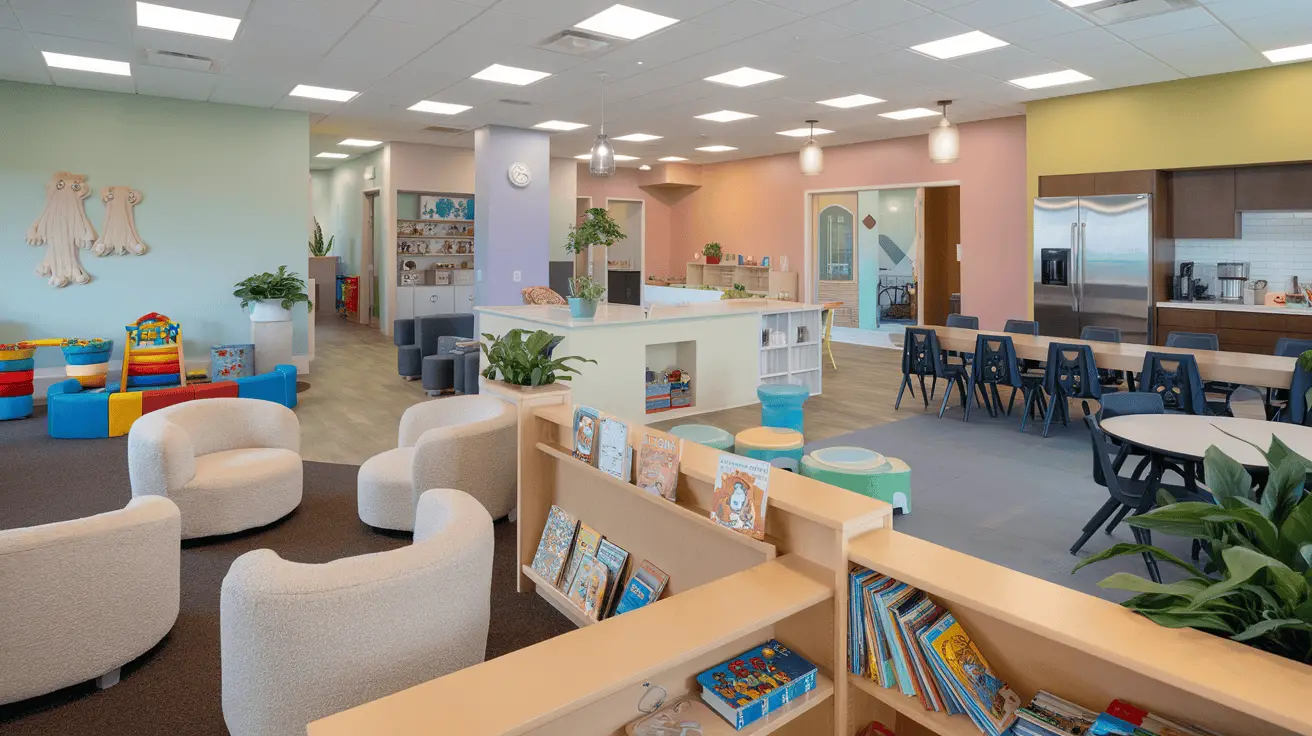
Designing a daycare isn’t just about creating a place for children to spend the day—it’s about building an environment that nurtures creativity, learning, and a sense of security. A well-designed daycare should balance function and aesthetics while ensuring safety, comfort, and stimulation for young minds. Whether you’re setting up a brand-new childcare center or revamping an existing one, a thoughtfully designed space can make all the difference.
From open-concept learning zones to nature-inspired interiors, the right daycare design can encourage exploration, social interaction, and independence. How do you create a space that fosters both fun and education? What daycare layouts work best for different age groups? In this guide, we’ll explore five modern daycare designs that blend innovative layouts with engaging environments to help you create the perfect daycare for little learners.
The Open-Concept Learning Haven
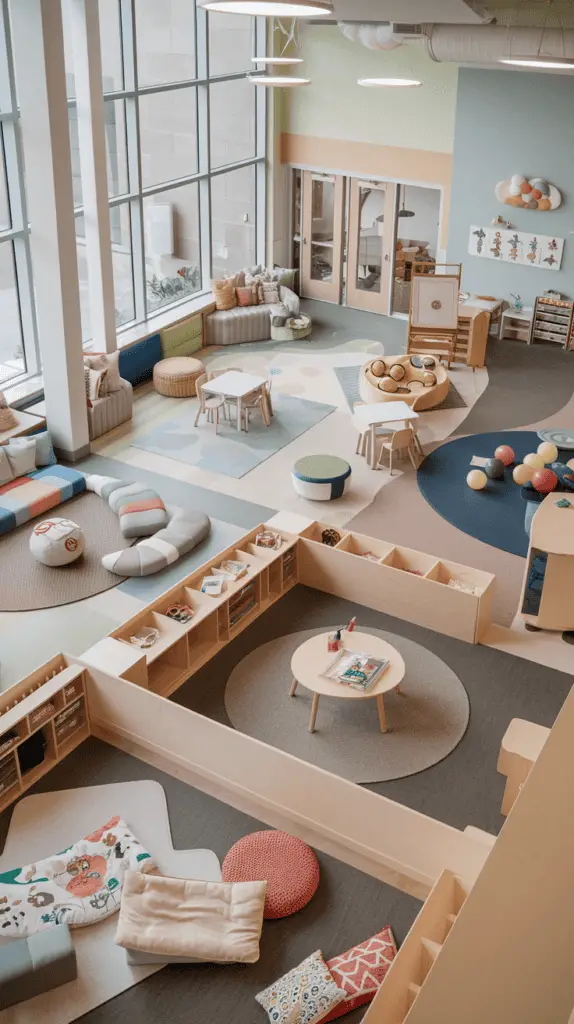
Gone are the days of rigid classroom setups. The open-concept learning haven is all about flexible spaces that adapt to different activities. Picture a daycare with distinct zones—reading corners, creative art stations, sensory play areas, and soft lounge spots—all blending seamlessly into one another. This layout encourages children to explore freely and choose activities that capture their interest.
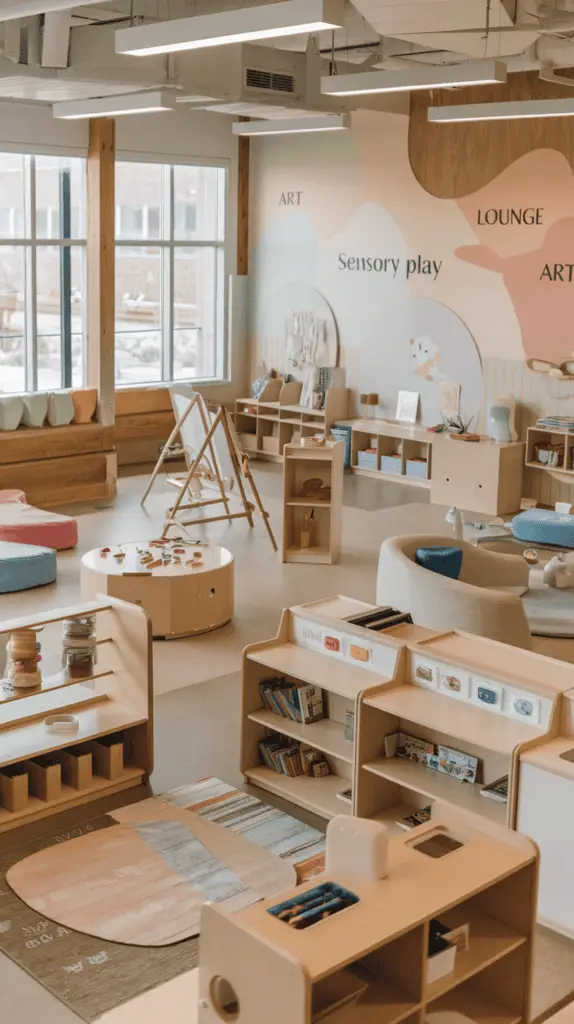
Design Considerations
– Use low partitions or shelves to define different zones without closing off the space completely.
– Opt for multi-functional furniture like cubbies that double as seating or movable tables that can be reconfigured for group work or solo play.
– Incorporate large windows for natural light, making the space feel open and inviting.
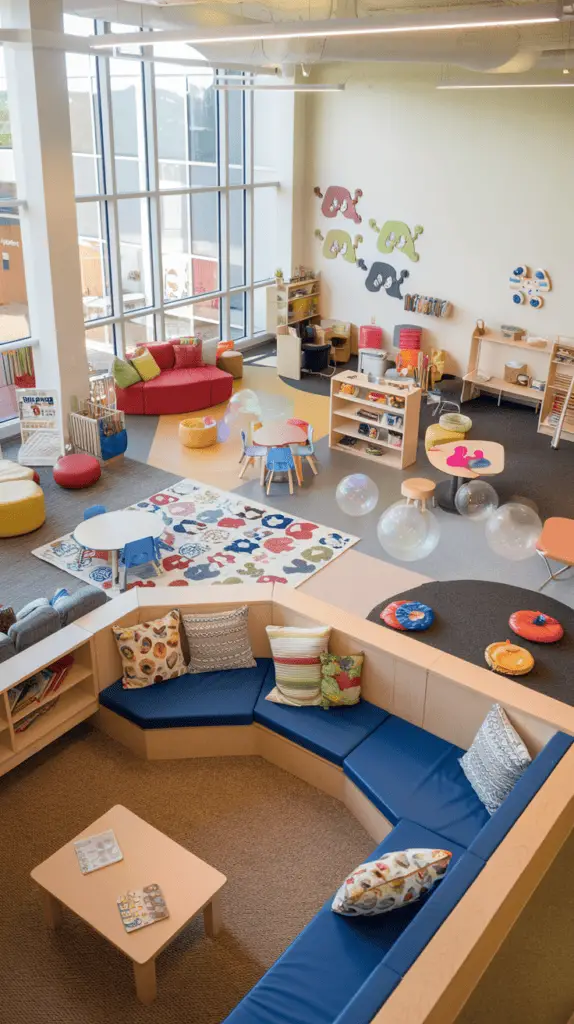
Color & Style
A mix of soft pastels and natural wood tones helps create a calming atmosphere while pops of color in rugs, cushions, and wall art add vibrancy. Using a combination of different flooring materials—wood for quiet reading areas, carpet for play spaces—can further define each section without the need for barriers.
This design works particularly well for mixed-age daycare centers where flexibility is key, allowing kids to engage in independent learning while still feeling part of a communal environment.
The Nature-Inspired Daycare

Children thrive when they feel connected to nature, so why not bring the outdoors inside? A nature-inspired daycare uses earthy tones, natural materials, and plenty of greenery to create a calming yet stimulating environment.
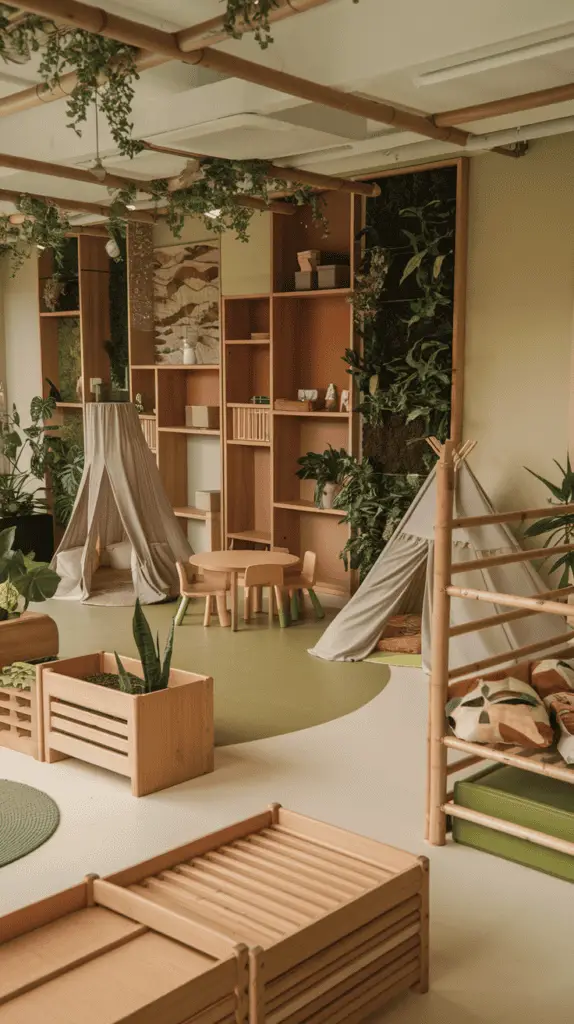
Design Considerations
– Opt for wooden furniture, bamboo shelving, and fabric play tents to keep the space warm and inviting.
– Include live plants or vertical gardens (kept out of reach for safety) to add freshness and air quality benefits.
– Maximize natural lighting with large windows, skylights, or light tunnels to create a bright and airy space.
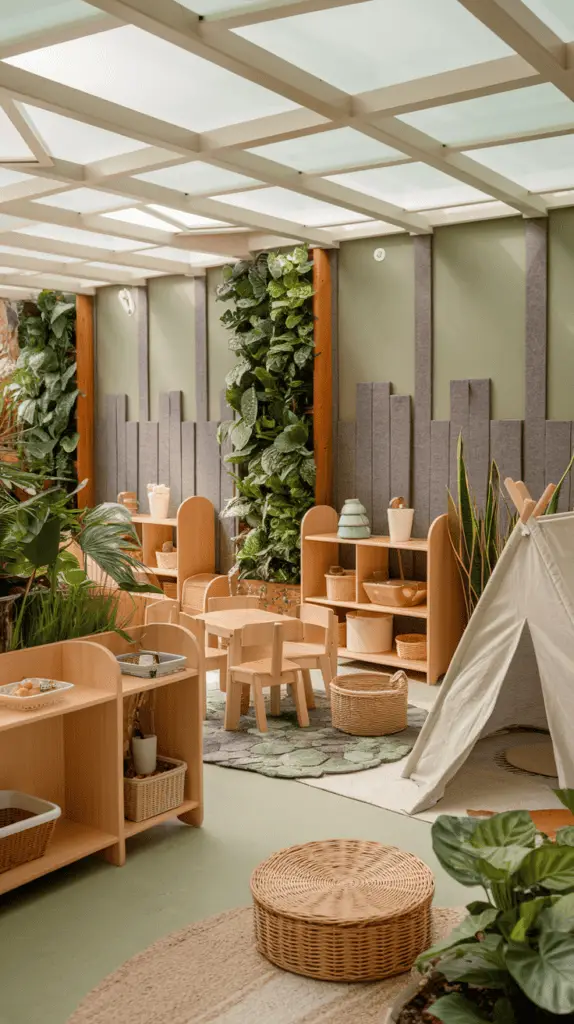
Color & Style
Muted greens, soft browns, and neutral creams dominate the palette, bringing a forest-like feel indoors. Earthy textures like wool rugs, wicker baskets, and felt wall panels enhance the organic look while remaining child-friendly and durable.
This design is ideal for daycares that want to promote mindfulness, sensory exploration, and a sense of tranquility, making it a perfect fit for younger children who benefit from a soothing atmosphere.
The Interactive & Tech-Friendly Space
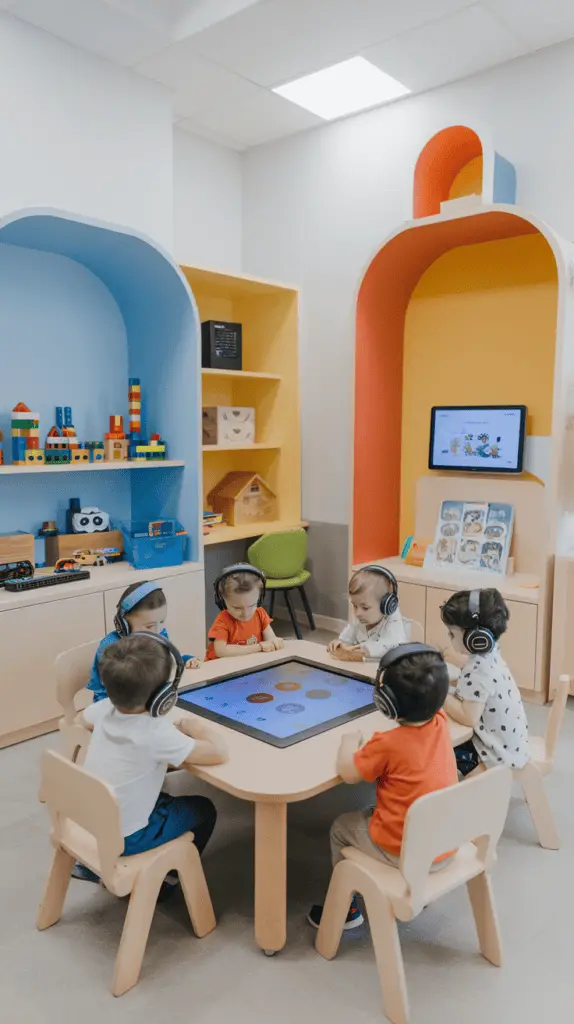
In today’s digital world, incorporating technology into a daycare can enhance the learning experience while keeping children engaged. A modern daycare that integrates interactive elements with traditional play creates a dynamic learning environment.
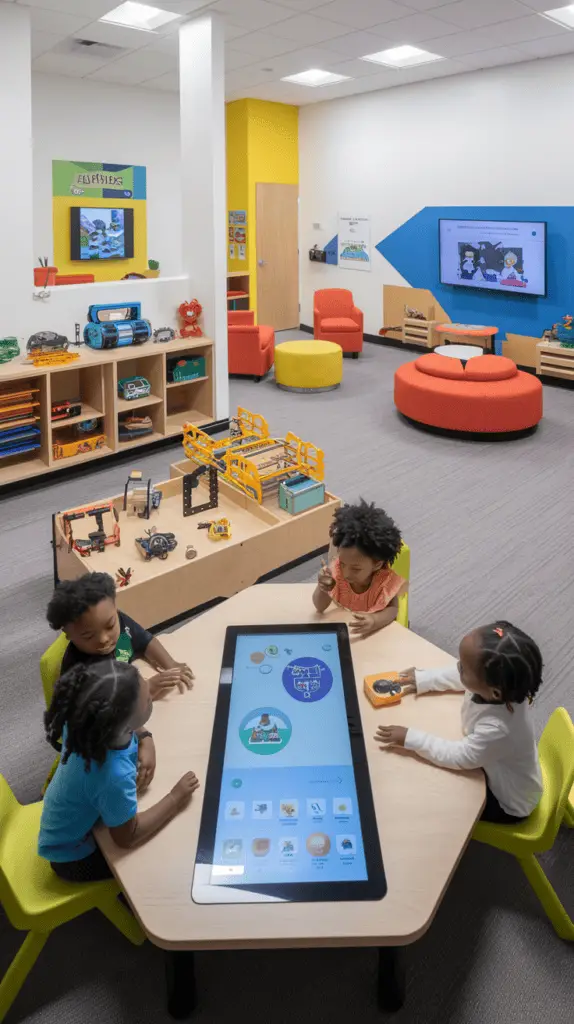
Design Considerations
– Use touch-screen learning tables or interactive wall panels with educational games.
– Set up a dedicated STEM station with building blocks, coding toys, and age-appropriate robotics.
– Include digital storytime corners where children can listen to audiobooks or follow along with interactive reading apps.
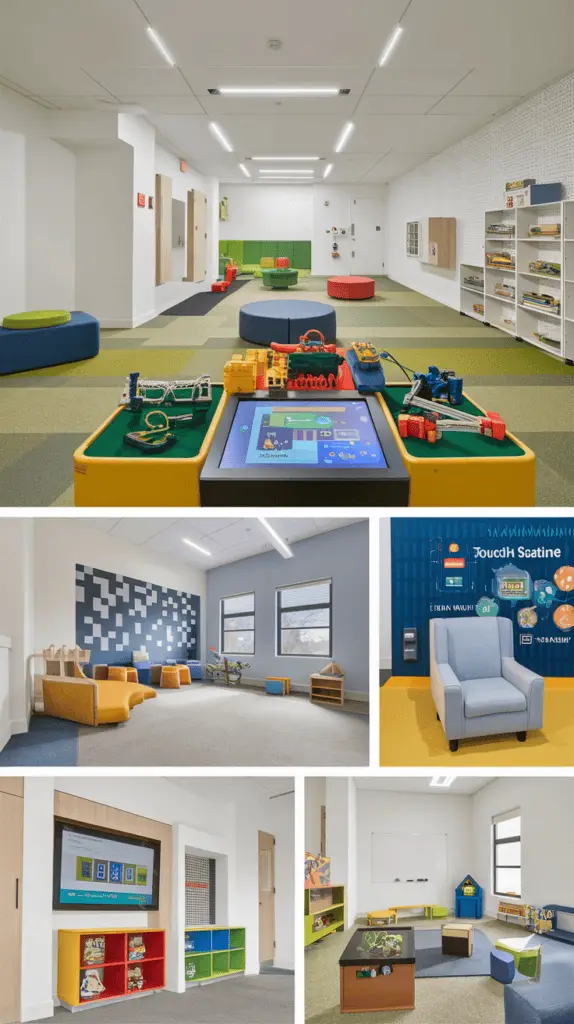
Color & Style
A clean, modern aesthetic with a mix of neutral tones and bright accent colors keeps the space both professional and playful. Light wood furniture paired with pops of blue, yellow, or orange adds energy to the room.
Perfect for older preschoolers, this daycare design blends hands-on play with technology, preparing children for the digital world while still emphasizing hands-on learning.
The Home-Like Comfort Space
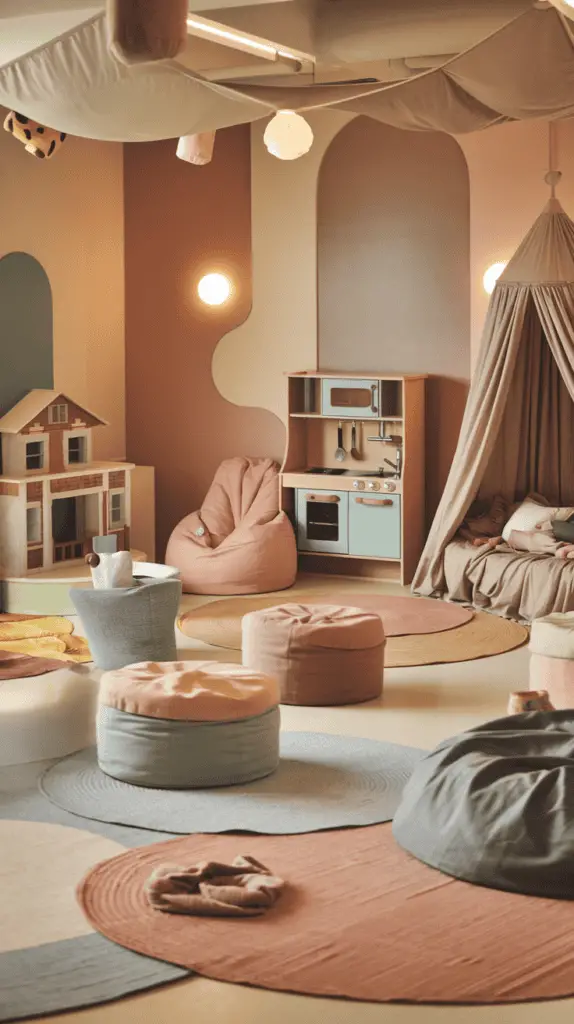
Some children struggle with separation anxiety when starting daycare, which is why creating a home-like environment can be a game-changer. This design focuses on warmth, comfort, and familiarity to help children feel at ease.
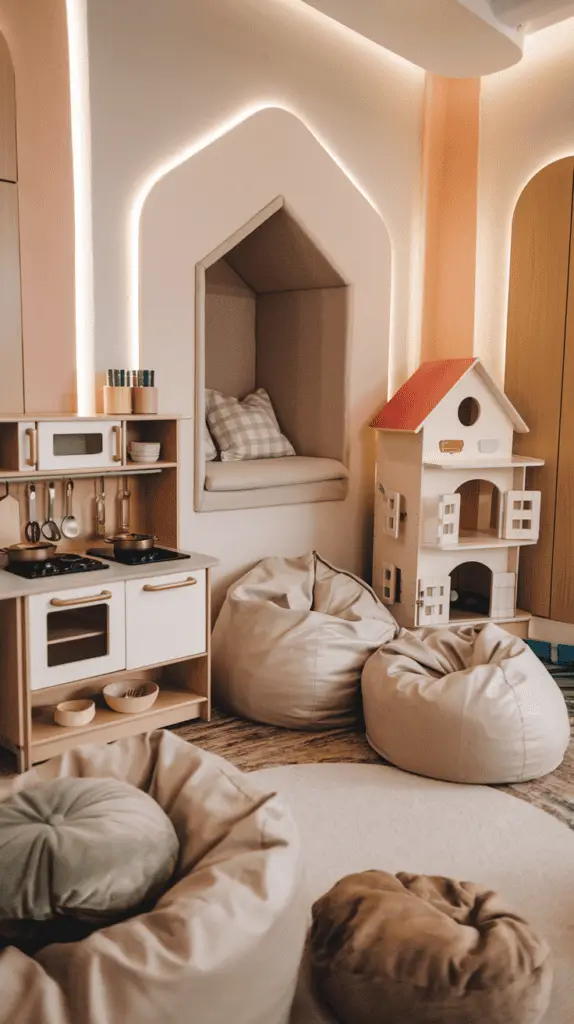
Design Considerations
– Include soft, cozy elements like plush seating, bean bags, and oversized cushions.
– Create small “home” corners with play kitchens, dollhouses, and comfy nooks for quiet time.
– Use warm lighting instead of harsh overhead fluorescent lights to make the space feel inviting.
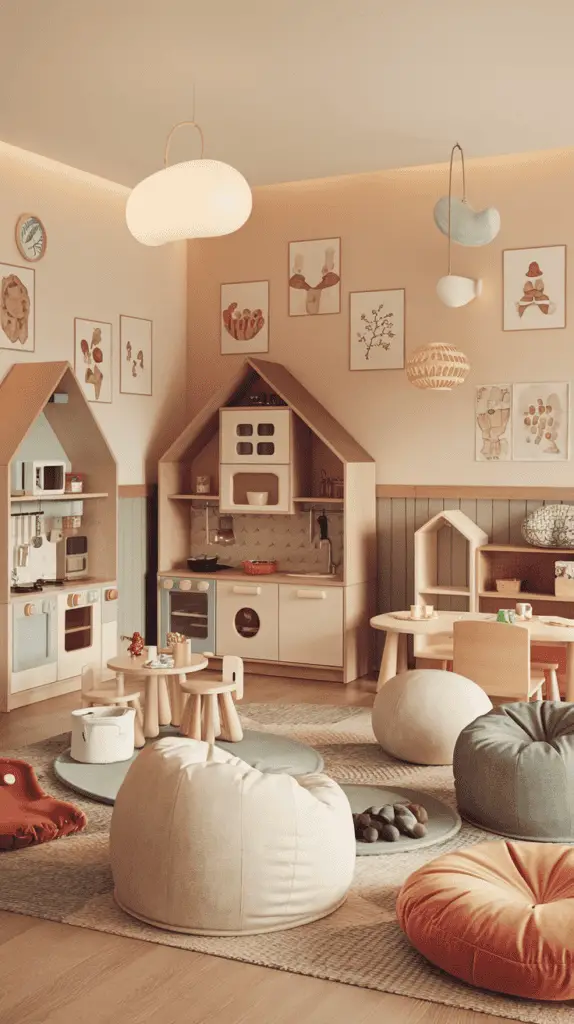
Color & Style
Soft pastels, neutral tones, and warm wood finishes create a welcoming environment. Gentle textures like fleece blankets, fabric canopies, and cozy rugs complete the look.
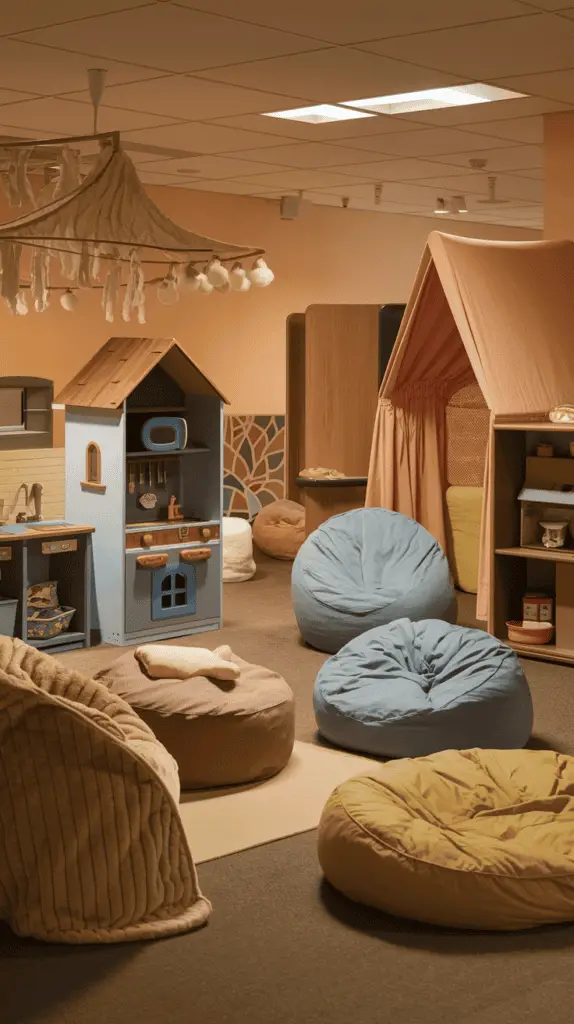
This daycare design is especially helpful for toddlers and younger children who need extra comfort in their transition to a group setting, fostering a sense of security and belonging.
The Urban Minimalist Daycare
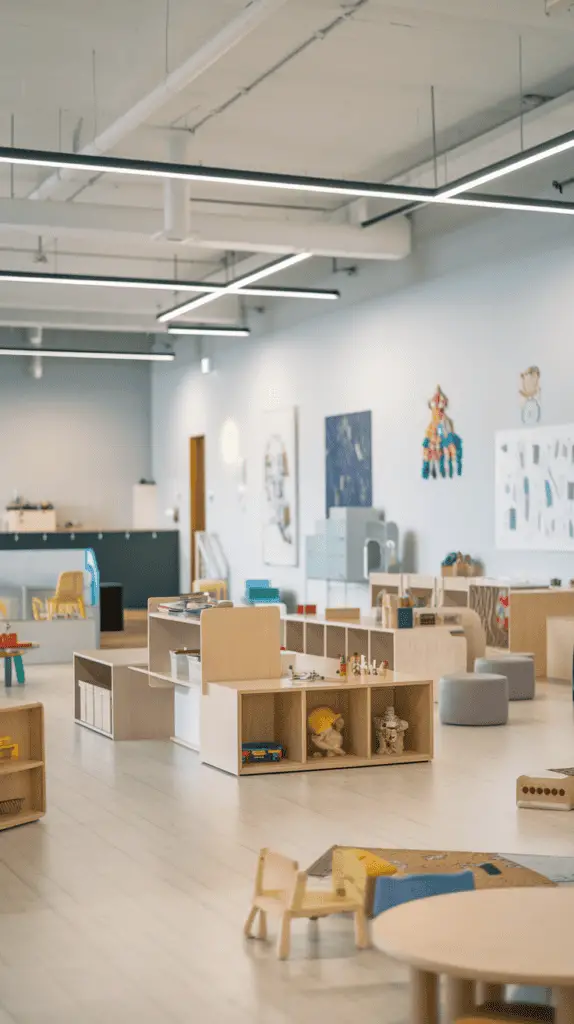
For a sleek, modern approach, the urban minimalist daycare design is all about clean lines, open spaces, and a clutter-free environment that still feels engaging for children.
Design Considerations
– Opt for modular storage units that keep toys and materials neatly organized and out of sight when not in use.
– Use sleek, modern furniture with rounded edges for safety and style.
– Keep wall décor minimal, with curated artwork and simple, visually appealing educational posters.
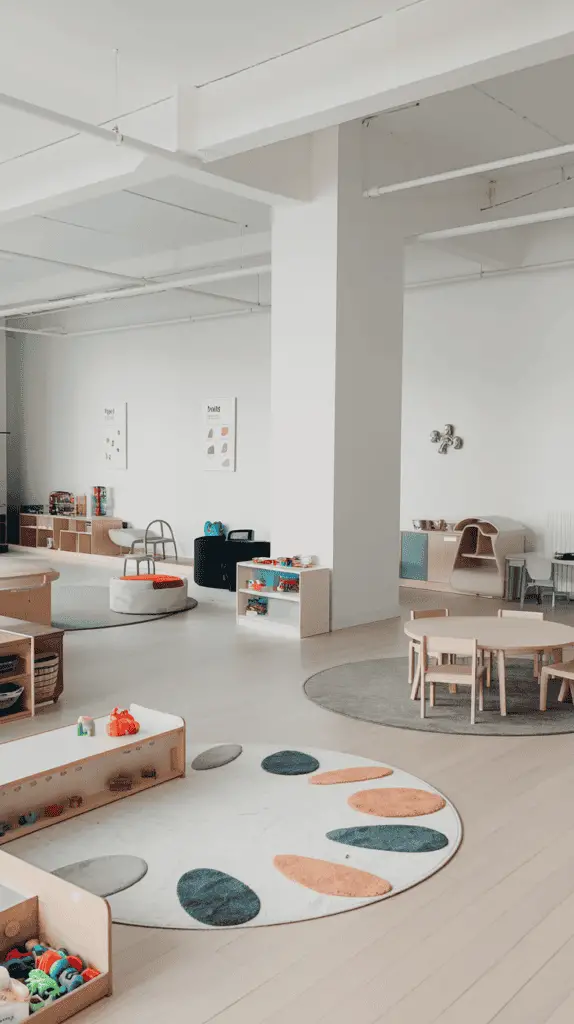
Color & Style
A monochrome or muted color palette with occasional pops of color in toys or art installations gives the space a sophisticated yet child-friendly appeal. White walls, light wooden floors, and strategically placed play areas keep the environment tidy yet stimulating.
This design is perfect for urban daycare centers looking to maximize small spaces while maintaining a modern, stylish atmosphere.
Final Thoughts
Creating a modern daycare that is functional, beautiful, and engaging requires thoughtful planning and a clear vision. Whether you lean towards a nature-inspired retreat, an interactive tech space, or a cozy home-like setting, the key is designing with the needs of children and caregivers in mind.
The best daycare designs encourage independence, socialization, and creativity while providing a safe and welcoming space. By incorporating well-thought-out layouts, calming color schemes, and flexible furniture, you can create a daycare that stands out and makes every day a delightful experience for little learners.
Which daycare design resonates most with your vision? No matter the theme, a well-designed space has the power to transform the daycare experience for children, parents, and educators alike.
